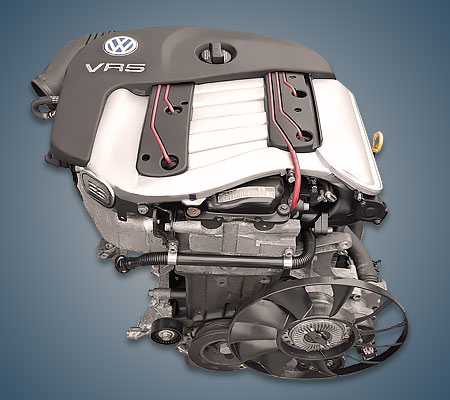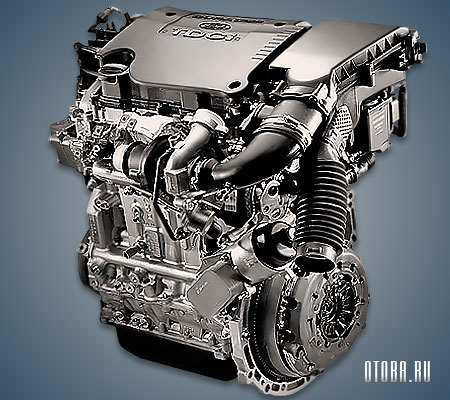
5L VR2.3 engine in Volkswagen Passat and Golf - history, specifications and features!
Content
V5 engines have been used by many manufacturers. However, due to the rather large dimensions, the number of units produced was significantly reduced. An alternative design, involving certain solutions in terms of engine size, was created by Volkswagen engineers. The result was the VR5 engine found in the Passat and Golf. We present the most important information about it!
VR5 engine family - basic information
The group includes internal combustion engines that run on crude oil. Drive design work was carried out from 1997 to 2006. When creating models from the VR5 family, the experience of the engineers who created the VR6 variant was used.
The VR5 category includes actuators with an angle of inclination of 15°. It is this aspect that makes motorcycles unusual - the standard parameter is 180 ° in the case of V2, V6 or V8 engines. The working volume of five-cylinder engines is 2 cm324.
VR5 engine - technical data
The 5 liter VR2,3 engine features a gray cast iron cylinder block and a lightweight high strength aluminum alloy cylinder head. Bore 81,0 mm, stroke 90,2 mm.
In the block of units there are two rows of cylinders containing respectively three and two cylinders. Placement of the layout in the transverse system - in front, and in the longitudinal - on the right. The firing order is 1-2-4-5-3.
Version VR5 AGZ
The engine at the beginning of production - from 1997 to 2000 was produced in a 10-valve version with the designation AGZ. The variant produced 110 kW (148 hp) at 6000 rpm. and 209 Nm at 3200 rpm. The compression ratio was 10:1.
AQN AZX version
It is a 20-valve model with 4 valves per cylinder with an output of 125 kW (168 hp) at 6200 rpm. and a torque of 220 Nm at 3300 rpm. The compression ratio in this version of the drive was 10.8:1.
Drive design
Engineers have developed an engine with variable valve timing and one direct-acting cam per cylinder bank. The camshafts had a chain drive.
Another feature of the VR5 family is that the exhaust and intake ports do not have the same length between the cylinder banks. At the same time, valves of unequal length had to be used, which ensured optimal flow and power from the cylinders.
A multi-point, sequential fuel injection - Common Rail was also installed. Fuel was injected directly into the bottom of the intake manifold, right next to the cylinder head intake ports. The suction system was controlled by a Bosch Motronic M3.8.3 control system.
Optimal use of pressure waves in the VW engine
There was also a cable throttle with a potentiometer that controlled its position, allowing the Motronic ECU control component to deliver the correct amount of fuel.
The 2.3 V5 engine also included an adjustable intake manifold. It was vacuum controlled and controlled by the ECU through a valve that was part of the vacuum system of the power unit.
It worked in such a way that the valve opened and closed depending on the engine load, the generated rotational speed and the throttle position itself. Thus, the power unit was able to use the pressure waves that were created in the process of opening and closing the intake windows.
Operation of the power unit, for example Golf Mk4 and Passat B5
The motor, whose production began in the late 90s, was installed on the most popular variants of the German manufacturer's cars until 2006. The most characteristic, of course, are the VW Golf IV and VW Passat B5.
The first of them accelerated to 100 km / h in 8.2 s and could accelerate to 244 km / h. In turn, the Volkswagen Passat B5 accelerated to 100 km / h in 9.1 s, and the maximum speed developed by the 2.3-liter unit reached 200 km / h.
What other cars have the engine installed on?
Although the VR5 gained popularity mainly due to its excellent performance and unique sound in the Golf and Passat models, it was also installed in other cars.
Volkswagen also used it in the Jetta and New Beetle models until the engine was changed to inline-four units with small turbochargers. The VR5 block was also installed on another brand owned by the Volkswagen Group - Seat. It was used in the Toledo model.
The 2.3 VR5 engine is unique
This is due to the fact that it has a non-standard number of cylinders. Popular V2, V6, V8 or V16 units have an even number of parts. This affects the uniqueness of the engine. Thanks to the unique, uneven layout and narrow arrangement of the cylinders, the power unit produces a unique sound - not only during acceleration or movement, but also in the parking lot. This makes well-maintained VR5 models very popular and will only increase in value over the years.
